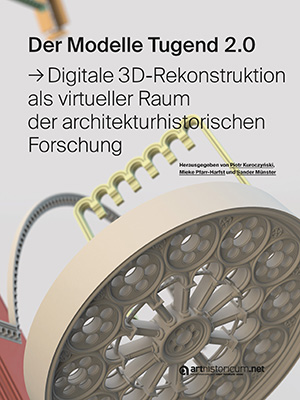
Zitationsvorschlag
Lizenz

Dieses Werk steht unter der Lizenz Creative Commons Namensnennung - Nicht-kommerziell - Keine Bearbeitungen 4.0 International.
Identifier
Veröffentlicht
Der Modelle Tugend 2.0
Digitale 3D-Rekonstruktion als virtueller Raum der architekturhistorischen Forschung
Der Modelle Tugend 2.0 – Digitale 3D-Rekonstruktion als virtueller Raum der architekturhistorischen Forschung fasst die digitale 3D-Rekonstruktion als Bestandteil einer interdisziplinären objektbezogenen Forschung auf. Handbuchartig werden übergreifende Methoden an der Schnittstelle zwischen Archäologie, Kunst- und Architekturgeschichte einerseits sowie Computergrafik und Kulturinformatik andererseits präsentiert und diskutiert. Zentrales Anliegen des Buches ist es, die Bandbreite des aktuellen wissenschaftlichen Diskurses zu digitalen 3D-Rekonstruktionen abzubilden und dabei sowohl bisherige Traditionen und Entwicklungslinien, den aktuellen Forschungs- und Praxisstand als auch künftige Herausforderungen und Desiderate darzustellen. Studierende, Wissenschaftlerinnen und Wissenschaftler wie auch interessierte Laien erhalten einen fundierten Überblick zum Themenfeld der digitalen 3D-Rekonstruktion im Feld der Architekturgeschichte. Der Fachcommunity bietet das Werk eine umfassende aktuelle Verortung und damit die Grundlage für die Identifizierung von zukünftigen Handlungsfeldern und Anregungen zu weiterführenden Diskursen.






